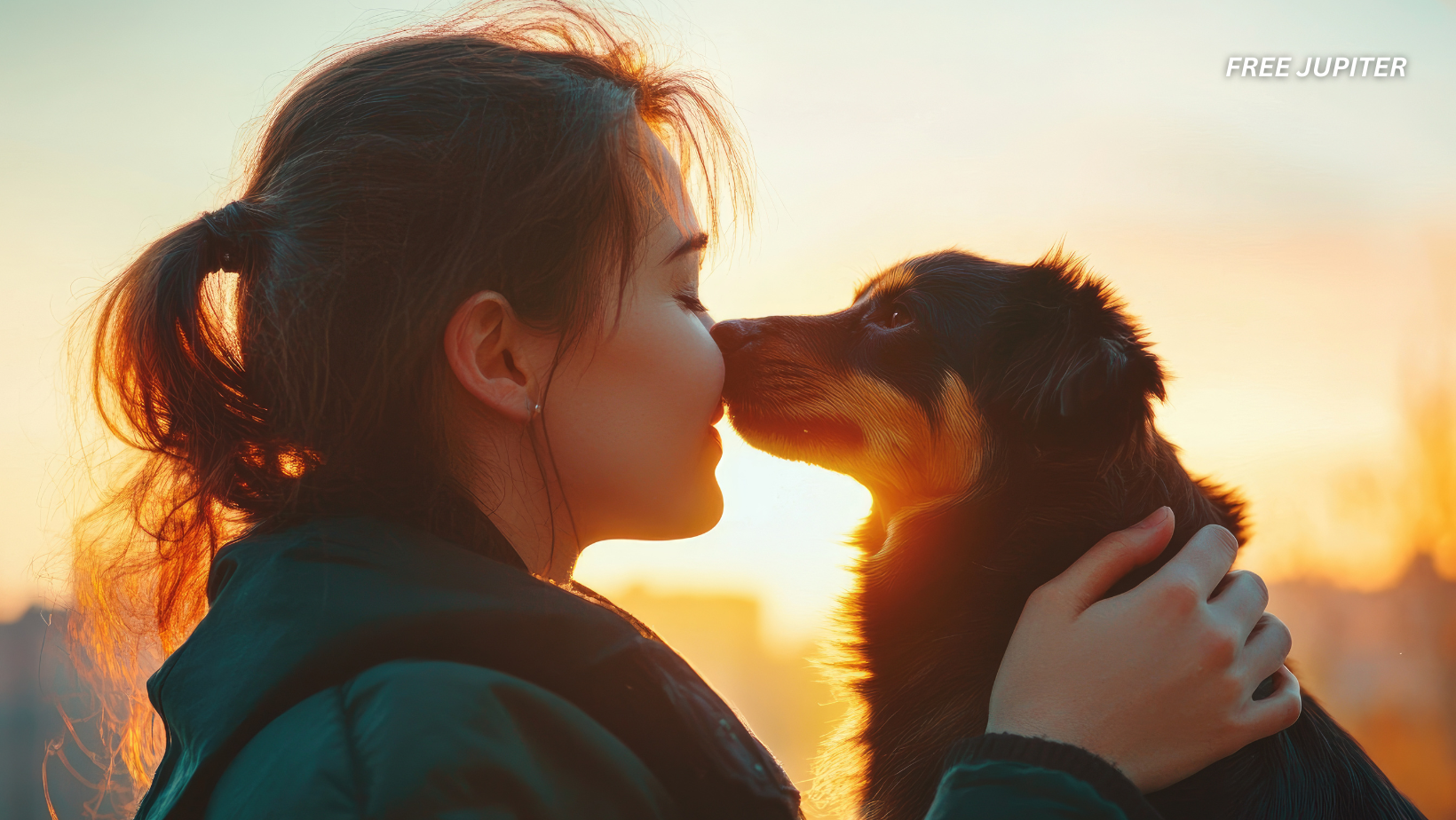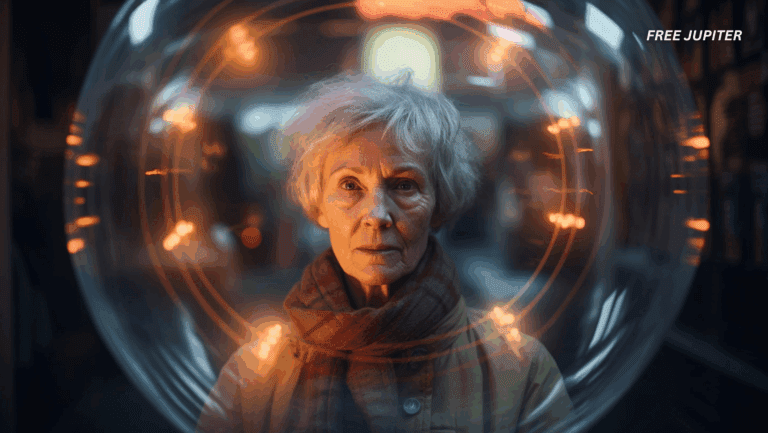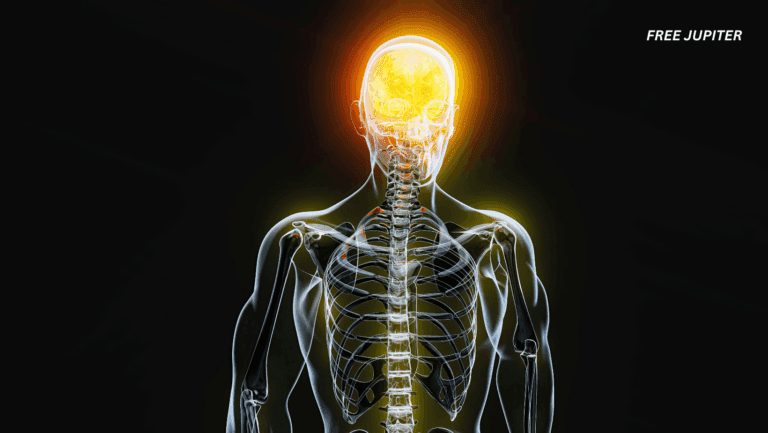Friendly Note: FreeJupiter.com shares general info for curious minds 🌟 Please fact-check all claims—and always check health matters with a professional 💙
Dog owners have always had a sneaking suspicion that their pets adore them more than anything else in the world. It’s in the way they wag their tails when you walk in the door, follow you from room to room, or rest their head on your lap as if you’re the only safe place in the universe.
Now, modern neuroscience has given us concrete proof. Researchers have looked inside canine brains and found that when it comes to their favorite things, many dogs place you at the top of the list—above food, above other dogs, and even above the mysterious smells drifting in from the neighbor’s yard.
And the best part? We’re not just guessing. The evidence comes straight from their brains.
How Scientists Peeked Into a Dog’s Mind
The study that set tails wagging comes from Emory University in Atlanta, Georgia. Led by neuroscientist Gregory Berns, the team wanted to answer a deceptively simple question: What do dogs truly value most?
The answer wasn’t going to come from watching tail wags alone. Dogs might love food, belly rubs, other dogs, or simply rolling in something questionable. So the researchers decided to go straight to the source—the brain itself.
To do that, they used magnetic resonance imaging (MRI), a technology that can map brain activity by detecting changes in blood flow. If a certain brain region “lights up” on a scan, it means that area is working hard in response to something.
But there was a problem. An MRI machine is loud, intimidating, and requires its subject to remain perfectly still—a tough ask for a creature that thinks standing still for five seconds is a lifetime.
Read more: Psychology: People Who Talk To Their Pets Like They Are Humans Display Certain Emotional Traits
Training a Dog to Stay Still in an MRI
Before any data could be collected, the team spent months patiently training the dogs to voluntarily enter the MRI scanner and lie still without being restrained or sedated.
They used positive reinforcement—think treats, praise, and lots of encouragement—until each dog could comfortably rest their head in a custom chin cradle. This way, the scans could capture clear, accurate images without stress or fear for the animal.
This accomplishment alone was groundbreaking. Prior to this, most brain studies in animals involved sedation, which can dull or alter brain activity. Here, the dogs were fully awake, alert, and able to respond naturally to stimuli.
The Scent Challenge: Food vs. Family
Once the canine participants were MRI-ready, researchers presented them with five different smells:
- Their owner’s scent
- A familiar dog’s scent
- An unfamiliar dog’s scent
- A familiar human’s scent (someone they knew, but not their owner)
- The smell of food
Why smells? Because for dogs, scent is the primary way they experience and interpret the world. Where humans rely heavily on sight, dogs rely on smell—and they’re astonishingly good at it.
The average dog’s nose contains up to 300 million olfactory receptors (compared to about six million in humans). They can detect scents at concentrations as low as one part per trillion and can even track the passage of time through smell—detecting how long ago something was there.
So, when a dog smells you, they aren’t just catching a whiff of “human.” They’re reading an entire biography—where you’ve been, what you’ve touched, whether you’ve been near other animals, and even your mood.
Read more: Scientists Finally Reveal How Cats Navigate Home Over Super Long Distances
What the Scans Revealed
When the dogs sniffed their owner’s scent, the caudate nucleus—a key part of the brain’s reward system—lit up far more than it did for any other smell. This area processes feelings of pleasure, reward, and positive associations.
The reaction wasn’t subtle. The “owner smell” created the most robust activation compared to all other scents, including the universally tempting smell of food.
This suggests something profound: to these dogs, the emotional payoff of their human’s presence outweighs even their most primal motivator—eating.
Other Studies Point to the Same Conclusion
This wasn’t the only research to uncover this special preference. A separate study from Budapest found that dogs’ brains are also tuned to respond strongly to happy human voices.
When dogs hear a person speak in a cheerful tone, the auditory regions of their brains show increased activity—almost as if they can share in the emotion. This may explain why your dog seems to perk up when you talk in “dog voice” or why they rush to greet you when they hear your laughter.
The Evolution of a Bond
The deep connection between humans and dogs is no accident—it’s the product of thousands of years of co-evolution.
Archaeological evidence suggests that dogs were domesticated at least 15,000 years ago (possibly even earlier). Early humans and wolves likely formed a mutually beneficial partnership: wolves provided protection and help with hunting, while humans offered food and shelter.
Over generations, wolves that were friendlier and less fearful of humans were more likely to survive and reproduce—eventually giving rise to the dogs we know today.
This long history has shaped their behavior in remarkable ways:
- Eye Contact: Unlike wolves, dogs are comfortable holding eye contact with humans, which fosters emotional bonding.
- Reading Emotions: Dogs can interpret subtle facial cues and body language, allowing them to sense our moods.
- Comfort Seeking: When frightened or stressed, dogs often look to humans for reassurance, similar to how a child seeks comfort from a parent.
The Parent-Child Parallel
One of the most intriguing discoveries in recent research is that the bond between humans and dogs can neurologically mirror the bond between a parent and child.
In one experiment, mothers had their brains scanned while looking at pictures of their own children and of their dogs. Both sets of images activated the same reward and emotional processing areas. The takeaway? Our brains can feel a love for our dogs that is strikingly similar to the love we feel for our own children.
And the affection might be mutual. When dogs and their owners gaze at each other, both experience a rise in oxytocin, the “love hormone” that strengthens social bonds in humans and other animals.
Why This Science Matters
It’s tempting to see these findings as just another cute dog fact, but they have real implications for how we treat and care for our pets.
If dogs truly value their human relationships above food, then emotional engagement—playtime, training, affection, and shared experiences—should be considered just as important as nutrition and physical exercise.
It also suggests that neglecting a dog’s social needs can have as much of an impact on their well-being as failing to feed them properly.
Practical Takeaways for Dog Owners
Based on what we know from brain imaging and behavioral studies, here are some ways to strengthen your bond with your dog:
- Quality Time Over Treats: While snacks are nice, your dog likely treasures your attention more. Play, train, and interact daily.
- Talk to Them: Your voice matters. Use positive tones and words—they pick up more than you might think.
- Eye Contact Builds Trust: Gentle, relaxed eye contact releases bonding hormones for both of you.
- Consistency Counts: Being a reliable presence helps your dog feel secure and strengthens emotional ties.
Read more: Brave Dog Stays Behind in Wildfire to Protect and Save Every Goat in His Care
The Big Picture
So, the next time your dog sprints to the door when you get home, remember—it’s not just because you might have dinner in hand. To them, your presence is the ultimate reward.
Science now confirms what dog owners have always known in their hearts: you’re not just a caretaker or a source of meals. You’re family. You’re their safe place. You’re their favorite smell in the whole world.
And when their brain lights up at the thought of you, it’s simply reflecting a truth that has been shaped by thousands of years of companionship: in the eyes of a dog, you are home.










